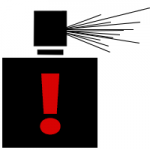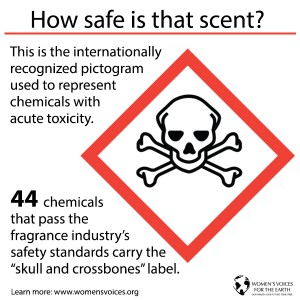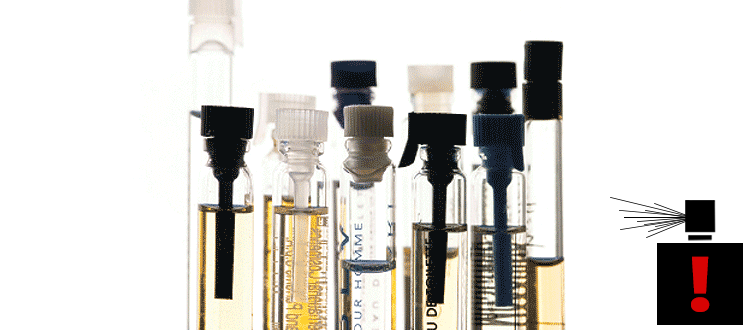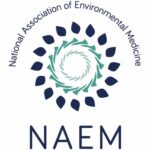Something Stinks About Fragrance Safety Standards
 |
|
Alex Scranton Director of Science & Research |
Fragrance scents can be found in almost anything: cleaners, personal care products, perfume, tampons and pads, air fresheners, and even baby pacifiers and baby cologne (yes, there is such a thing), the list is endless. The popular air freshener brand Glade recently even came out with a fragrance additive for interior paint so you can whiff the scent of clean linen all day, every day.
Considering we are exposed to fragrance every day, even for those of us who deliberately don’t use it (we’ve all sat next to that woman or man on the plane who is wearing too much perfume or cologne or been accosted with the heavily scented dryer exhaust of a neighbor) it’s shocking that there are very little regulations over the ingredients used in fragrance.
Companies claim the exact chemicals used in fragrance are a trade secret and therefore don’t have to be disclosed to the public. (Never mind that advances in reverse engineering that can quite accurately deformulate fragrances and are used by fragrance competitors all the time, make that argument moot.) Instead, for products that bear an ingredient label, often the single word “fragrance” will be used to denote the presence of scent. Although that single word can be deceiving, as a single fragrance can contain hundreds of ingredients.
In response to consumer demands to know more about what’s in fragrance, the International Fragrance Research Association (IFRA), an industry-backed trade group, has published a Transparency List of a whopping 3,000 chemicals used in fragrance.[i] This gives us an idea of what may be in fragrance, but fragrance is rarely disclosed on a product-specific level, making consumers completely in the dark about what exactly they are being exposed to.
 What’s more, the safety of those 3,000 fragrance chemicals are not determined by any governmental agency globally in any comprehensive fashion. Instead IFRA and their research arm, the Research Institute for Fragrance Materials (RIFM) have been trusted to self-regulate, and to establish its own safety guidelines for the use of fragrance chemicals.
What’s more, the safety of those 3,000 fragrance chemicals are not determined by any governmental agency globally in any comprehensive fashion. Instead IFRA and their research arm, the Research Institute for Fragrance Materials (RIFM) have been trusted to self-regulate, and to establish its own safety guidelines for the use of fragrance chemicals.
It’s an inherent conflict of interest for an industry to set their own safety guidelines. Our research has found the “safety standards” set by the fragrance industry are incomplete, biased, and operating with a problematic lack of transparency which far better serves the financial interests of the fragrance industry than protects public health. The IFRA/RIFM safety program is essentially comprised of four main parts:
- Peer-reviewed science on fragrance chemicals
- Safety assessments conducted by an independent expert panel (REXPAN)
- A comprehensive database of toxicological data on fragrance chemicals
- IFRA standards determining allowable levels of fragrance chemicals to be used in products
On the face of it, this sounds pretty good. But the reality shows the gaps and loopholes in the program to be significant, leaving a program which is simply inadequate to protect public health. For example, most of the basic science studies on fragrance ingredients are conducted by fragrance manufacturers and have never actually been published in a peer-reviewed scientific journal. The peer-reviewed science that RIFM refers to are review articles which often mention and rely upon the summary results of these unpublished studies. But largely the original studies themselves have never actually been published. This means there is no peer review of laboratory practices, appropriate controls, levels of significance or any of the hallmarks of authoritative science, to ensure that the results of these studies have not been manipulated to serve the interests of the manufacturer conducting the testing.
The RIFM Expert Panel (REXPAN) is an independent panel of toxicologists called upon to review the safety of fragrance ingredients. Sounds great until you realize that there is a noticeable omission of expert panel reviews of any fragrance chemicals that are controversial due to their potential toxicity, including phthalates, synthetic musks, styrene, methyl eugenol and others. It’s not clear if REXPAN has never been asked to conduct a review of these controversial chemicals or whether their reviews (if done) were simply never made public. It appears the REXPAN can get away with that because they operate in relative secrecy with no public disclosure of meeting dates, agendas or minutes.
The comprehensive RIFM database does exist, and is apparently full of interesting and pertinent data on the safety of fragrance chemicals. Unfortunately, one must be a dues paying member of IFRA to gain access to the database. RIFM does offer a non-member subscription to the database for the low price of $20,000 per year, but even those requests must first be approved by an industry review panel.
Lastly, the IFRA has established the IFRA Standards, a set of voluntary bans and restrictions imposed on 186 specific fragrance chemicals of concern. The Standards are a bold step for a self-regulating industry, but again, it is rather apparent that there are holes in this process too. Notably, there are no IFRA standards in place for many of the most controversial fragrance ingredients of concern. There are no restrictions in place for the use of the following known carcinogens: styrene, pyridine, or benzophenone. There are no restrictions on the use of phthalates of any kind. There are no restrictions on the hormone-disrupting synthetic musks Galaxolide or Tonalide. What’s more, the IFRA standards/Code of Practice are voluntary, with little to no compliance verification required. IFRA member companies must comply with IFRA standards to maintain their membership, but compliance with the standards only rarely must be proven.
 The strength of the industry’s safety program is also called into question when you consider that over 100 of the chemicals on IFRA’s Transparency List can be found on authoritative lists of toxic chemicals around the world including:
The strength of the industry’s safety program is also called into question when you consider that over 100 of the chemicals on IFRA’s Transparency List can be found on authoritative lists of toxic chemicals around the world including:
- California Prop 65
- National Toxicology Program Carcinogens
- International National Agency for Research on Cancer
- EU Annex ii: Chemicals prohibited from cosmetics in the European Union
- Canadian Hotlist-Chemicals prohibited/restricted from cosmetics
- EU Chemicals of Very High Concern
- ChemSec SIN List
These chemicals have been prioritized for review by numerous governmental bodies due to their inherent toxicity– yet these same chemicals do not appear to be prioritized by the IFRA/RIFM safety program.
Bottom line: fragrance has received a free pass for far too long.
There are several things that need to happen to help ensure the safety of fragrance ingredients:
- Federal and state legislation is needed that requires product-specific disclosure of fragrance ingredients.
- Federal and state legislation is needed that requires fragrance to meet an unbiased standard of safety. Senators Feinstein (D-CA) and Collins (R-ME) recently introduced the Personal Care Product Safety Act (S.1014) that seeks to more stringently regulate ingredients in cosmetics. Unfortunately the bill continues to exclude fragrance from disclosure and meeting any real bar of safety.
- Manufacturers should voluntarily disclose fragrance ingredients on a product-specific basis. Some manufacturers like SC Johnson & Son, RB, and Clorox have already begun to disclose more fragrance ingredients.
- Manufacturers should develop and disclose their comprehensive toxic chemical screening process which details how they ensure the safety of their products, including their fragranced products.
Without these protections in place we are left with an industry that keeps safety studies hidden from the public, avoids conducting safety assessments of some of the most high profile fragrance chemicals, and greenlights chemicals that reputable authoritative bodies have deemed hazardous. Does this sound like an industry you would trust to protect your health?
To read a full copy of my research report on fragrance, click here.
[i] http://www.ifraorg.org/en-us/ingredients





